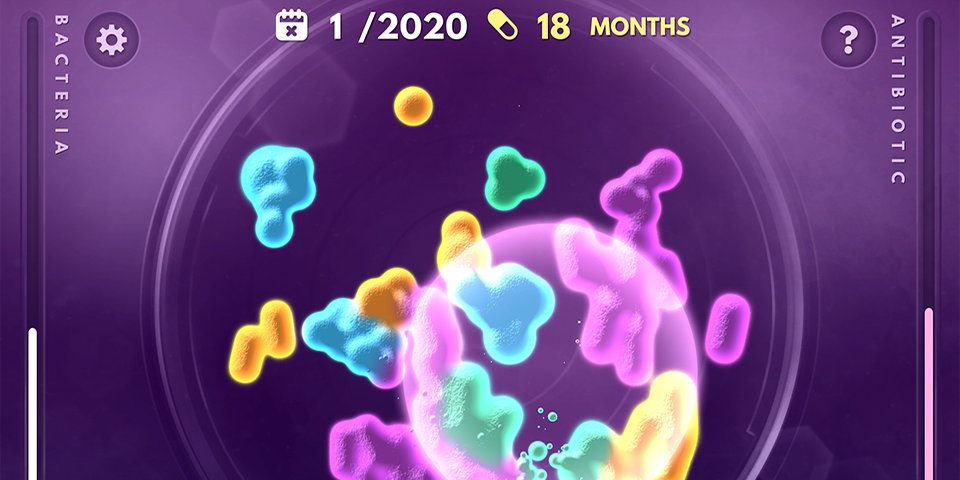The Science Museum has helped inspire a new game released today by the Longitude Prize, reports Roger Highfield, Director of External Affairs and member of the Longitude Committee.
Games are not only fun but instructive too. The Science Museum has known this for decades, having launched online educational games that have been enjoyed by millions of people over the past 30 years.
Now Nesta, the UK’s innovation foundation, is unveiling a new game, Superbugs, which highlights the catastrophic threat facing hospitals worldwide caused by the rise of antibiotic resistance, subject of the new Longitude Prize, a five year, £10 million challenge to develop a test to help guide doctors and reduce the unnecessary use of antibiotics.

Nesta, which has organised conferences to discuss the educational value of games, has worked with the BAFTA-winning applied games studio, Preloaded, to come up with a mobile app based game that’s not only fun to play but is scientifically sound.
In the game, players have to stamp out outbreaks of bacteria, but as in real life, they quickly evolve to become resistant. What the game reveals is the challenge of developing new antibiotics to remain one step ahead of resistance, offering players insights along the way. It has already picked up a Serious Play award.
Tamar Ghosh, spokesperson for the Longitude Prize said: “We know that our daily behaviours – like sharing and overusing antibiotics – can lead to bacteria becoming drug-resistant, so it’s really important that we increase awareness. It’s especially important to reach young people and games like this are a fantastic way of doing just that.”
At the Science Museum, we have shown that educational games can reach audiences that are both big and young too.
“We often use then to teach or communicate sometimes complex science and technology in a playful and familiar way – it’s what we call stealth learning,” said Dave Patten, Head of New Media, who first helped develop a ‘Design a Rocket’ game for the Space Gallery when he joined the Science Museum in 1985.
The museum has also worked with Preloaded, notably on Rugged Rovers, developed for our Engineer your Future exhibition, and aimed to get teenagers to embrace their problem-solving skills and ingenuity to explore what it means to be a great engineer.
In the game, players are presented with an engine and invited to draw a body of any shape, add wheels of any size, then have to launch their rover into a rugged terrain of pits and cliff drops. Gallery visitors see their creations racing against one another in real time on a huge screen, while online players compete via the website.
Within three months over 1,000,000 rovers were drawn by players from all around the world. The installation was so successful a touring edition was commissioned to debut at the Big Bang Fair in March 2015 and a version has been installed at the Franklin Institute in Philadelphia.
We have a long and distinguished history of developing educational games for our visitors since Design a Rocket. Perhaps the most notable of these at the Science Museum, explains Patten, is the design a T-shirt game in Challenge of Materials which was produced for the museum by Spiral Productions and won a Gold IVCA award. That pioneering game spawned a raft of ‘design a’ games by us and many other museums.
The Transmission App, developed by LOJU, has been downloaded and played by over 850,000 people, with many more playing the online version. Other notable games include: Duck Boy in Nanoland – a game that explores material properties at the nanoscale, developed by Spiral Productions for a contemporary science exhibition; Launchball, named ‘Best Game’ and ‘Best in Show’ at the South by Southwest Interactive Festival in Austin, Texas; along with Transmission, Futurecade and Rizk.
We have also cast entire galleries into digital form. In Journeys of Invention, an iPad app takes users on 14 interactive journeys through the most revolutionary scientific inventions of all time. Journeys of Invention lets you navigate through a network of over 80 objects which you can rotate, examine in close up detail and even operate.
Developed by the Museum and Touch Press, you could step inside the Apollo 10 Command Module, encode your own secret message on a World War II Enigma Machine and examine a flea by manipulating Robert Hooke’s 17th-century microscope. In two years, 250,000 downloaded this virtual gallery.
This month the Museum launches Power UP, a hands-on, fully interactive gaming event which features the very best video games and consoles from the past 40 years. The Museum’s monthly adults only Lates on the evening of Wednesday 27th July will focus on gaming and also feature Superbug.
You can download Superbug now.